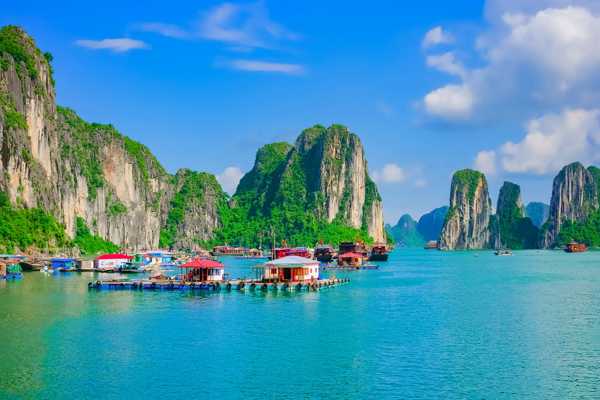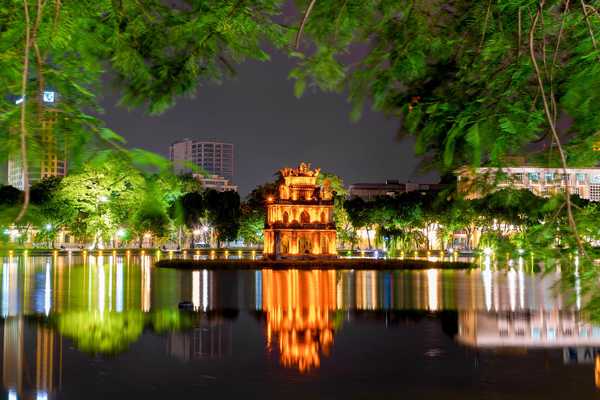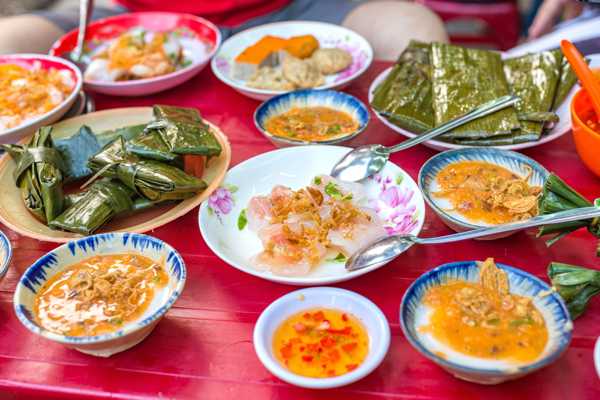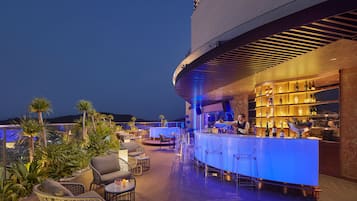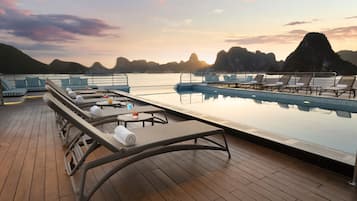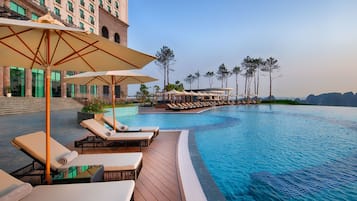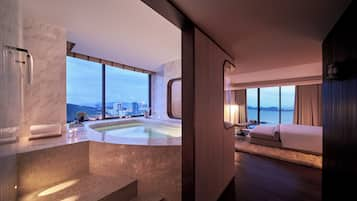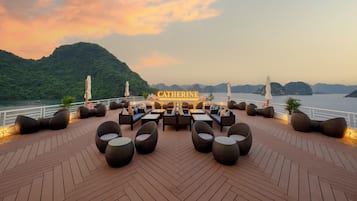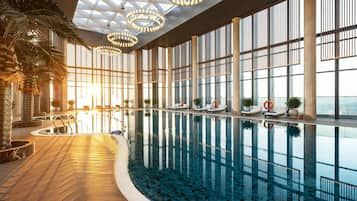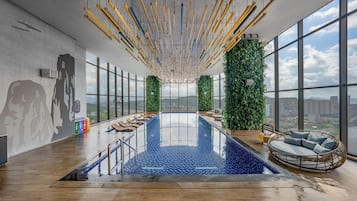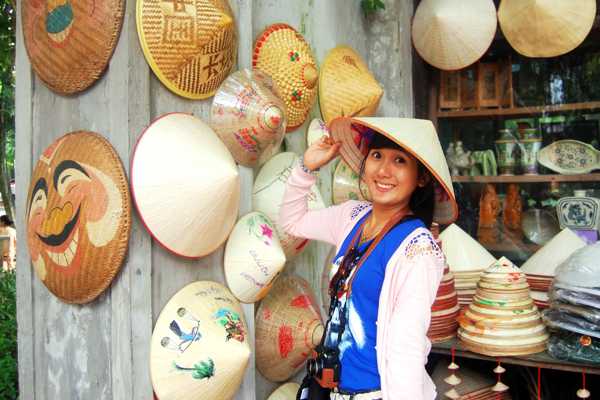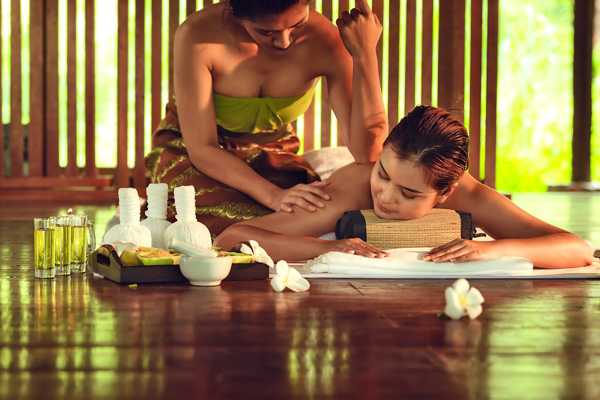Ha Long Bay cruises are available from almost every hotel and travel agency in Vietnam. They take you on a scenic journey to view one of the most impressive geographical formations in northern Vietnam. The bay has over 1,900 islets with pristine beaches, limestone caves, inland lakes, and floating villages. Declared a UNESCO World Heritage Site in 1994, the best way to experience this landscape is obviously by boat.
Depending on your budget, you can opt for a luxurious cruiser or budget diesel-powered junk to explore Ha Long Bay. Do allow for at least an overnight stay as there are plenty of things to see and do here. These cruises typically include English-speaking guides and hotel transfers as well as entrance fees, meals, and onboard entertainment. Here’s a rundown of everything you need to know about Ha Long Bay cruises.
- 1
Ha Long Bay cruise highlights

Joining a 2-day, 1-night Ha Long Bay cruise is a good option for first-time visitors. Such journeys enable you to discover the bay's various islets, beaches, villages, and grottoes at a more relaxed pace. These cruises also often feature stops for swimming, fishing, snorkelling, kayaking, and trekking. If you're not a fan of outdoor activities, you can simply relax and admire the stunning scenery.
Ha Long Bay cruises vary depending on the season and weather. One of the most popular stops in Halong Bay is Cat Ba Island. It features floating villages, hotels, restaurants, and bars that are set against a backdrop of lush mountains. The island is also home to endangered animals, such as Cat Ba langurs, southern serows, black giant squirrels, and civet cats.
- 2
Islands in Ha Long Bay

There are other notable islands in Ha Long Bay besides Cat Ba Island. Dau Be Island is another island listed on most Ha Long Bay cruises, located 28 km from Bai Chay Port. It's a prominent swimming and diving spot with a rich coral system, deep grottoes, and 6 inland lakes. You can only visit the caves by rowing your boat in at low tide. You can spot golden monkeys and flying squirrels here as well.
Bo Hon Island is where you can find Halong Bay’s most famous caves. Sung Sot, Trinh Nu and Trong Cave are set against a backdrop of mountains, cliffs, and lush forest. Accessible within a 2-hour boat ride from Bai Chay Port, it’s widely regarded as Halong Bay’s natural park. Plenty of cycads, orchids, and banyan trees grow here. It's also home to wild monkeys, deer, and chamois.
- 3
Other islands and villages in Ha Long Bay

Other smaller islands in Ha Long Bay include Ti Top Island, about 8 km southeast of Bai Chay Port. The islet was named in 1962 after a visit from former Soviet Union astronaut, Gherman Titov. The beach is its main draw, where visitors can enjoy swim or lounge on the sandbank. High-end resorts, hotels, restaurants, bars, and souvenir shops are set along Ti Top Beach. Take the 400-step stairway to the peak of Ti Top Island to enjoy a panoramic view of Ha Long Bay.
For more than 5,000 years, these islands are home to locals living mainly on agriculture and fishing. Ha Long Bay now houses just a few fishing villages, namely Cong Dam, Cua Van, Viet Hai, and Vung Vieng. From these villages, travellers can also join kayak tours, visit a pearl farm, try fishing with local fishermen, or simply observe their daily lives.
- 4
Main attractions in Ha Long Bay

The main attractions in Ha Long Bay are its limestone caves and grottoes, which no trip to the bay is complete without. Most are home to stalactites and stalagmites that are over 2 million years old. Dau Go Cave is one of the most visited caves in the bay. You can see stalactites and stalagmites that are 20 metres tall. An English-speaking guide leads you through a 90-step stairway to get to the cave. It has 3 main sections that are illuminated with natural and artificial lighting. There are formations in the shapes of people, animals, and objects. At the end of Dau Go Cave is a small pond with clear water. Locals claim that fairies use the pond to descend to Earth.
Trinh Nu, also known as 'Virgin Cave', has a statue of a woman. It's said that she was turned into stone after her death, having been unable to return home after being forced to marry an old mandarin. Local legend states that she escaped from him because her father could not pay a debt. When fishermen found her body, they buried her and built a small shrine inside the grotto.
Sung Sot Cave has 2 chambers with a square-shaped outer chamber and a 30-metre-tall limestone ceiling. Set within Bo Hon Island, its inner chamber formations resemble sentries conversing with one another. There’s another formation in the middle of the chamber that looks like a general surveying his troops.
The Kissing Rocks islets are undoubtedly the symbols of Ha Long Bay. The 2 rocks resemble a rooster and a hen facing each other. Locals believe they symbolise eternal love as they've been in Halong Bay for thousands of years.
- 5
Ha Long Bay dinner cruises

- Food
Ha Long Bay dinner cruises typically feature a menu of Vietnamese dishes such as spring rolls, stir-fried vegetables, fried rice, seafood, poultry and meat dishes. A fruit platter is commonly served as dessert. Alcoholic beverages and snacks are normally available at additional charges. Breakfast is served from 7 am to 8 am, which is typically eggs and toast with coffee.
In the evening, cruisers are docked. Most travellers retire early and rest in their cabins. However, there’s always a group that stays up to drink and socialise at the bar onboard until late. The cabins are usually fitted with either bunk beds or double beds.

